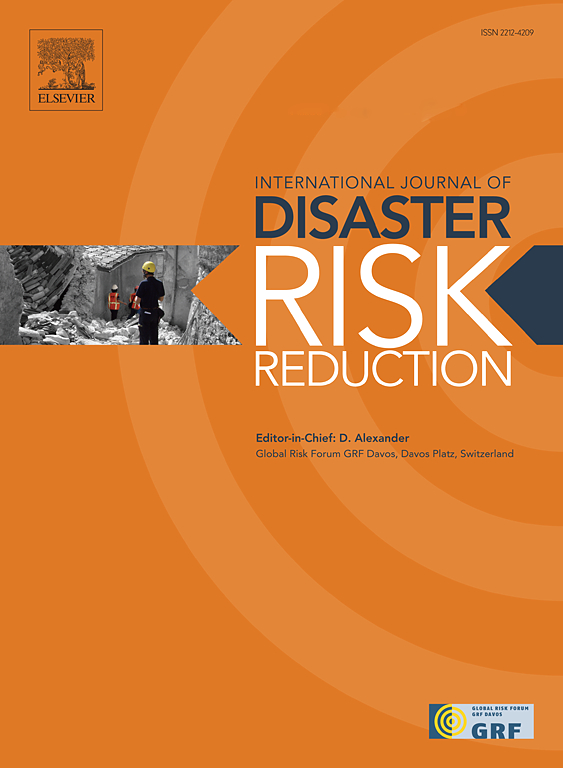Ecological risk networks: A network structure model for simulating negative ecological linkages among ecologically sensitive areas
IF 4.2
1区 地球科学
Q1 GEOSCIENCES, MULTIDISCIPLINARY
International journal of disaster risk reduction
Pub Date : 2025-02-20
DOI:10.1016/j.ijdrr.2025.105316
引用次数: 0
Abstract
Research on structural modeling of negative ecological flow networks across ecologically sensitive regions can reveal potential ecological risks in the region. We define this network structure model that simulates the interconnections of structural functions between discrete and isolated ecologically sensitive areas, and the negative ecological flows between them, as an ecological risk network. We chose an inland province, Shaanxi Province, at the junction of north and south China, as a research case. This article adopts the method of physical quality assessment to assess the ecological sensitivity of the research case. It identifies the risk source sites based on the evaluation results. Subsequently, potential risk corridors are determined based on circuit theory and the Minimum Cumulative Resistance (MCR) model. Finally, we constructed an ecological restoration pattern in Shaanxi Province and made targeted recommendations. 34 ecological risk sources, 50 nodes, and 77 corridors were identified. The research results indicate that there are more ecological risk networks in the northern part of the province, followed by the central part, and very few in the southern part. By analyzing the resistance surface of the ecological risk network, we found that the spatial distribution was formed because the Huanglongshan-Ziwuling mountain range hindered the connection between the dense ecological risk network area in the northern region of Shaanxi and the sparse area in the central region of Shaanxi. And the Qinling mountain range impeded the flow and diffusion of negative ecological flows in the northern part of Shaanxi and the central part of Shaanxi to the southern part of Shaanxi. The results of constructing the ecological restoration pattern show that cropland and grasslands are the most dominant ecological restoration patches. Some ecological restoration corridors and ecological restoration nodes overlap with the water and transportation networks. Targeted prevention and restoration strategies can be proposed in response to the above findings. This study is a practice and exploration of ecological risk network research. The results of this research can provide a theoretical reference for ecological restoration.
求助全文
约1分钟内获得全文
求助全文
来源期刊

International journal of disaster risk reduction
GEOSCIENCES, MULTIDISCIPLINARYMETEOROLOGY-METEOROLOGY & ATMOSPHERIC SCIENCES
CiteScore
8.70
自引率
18.00%
发文量
688
审稿时长
79 days
期刊介绍:
The International Journal of Disaster Risk Reduction (IJDRR) is the journal for researchers, policymakers and practitioners across diverse disciplines: earth sciences and their implications; environmental sciences; engineering; urban studies; geography; and the social sciences. IJDRR publishes fundamental and applied research, critical reviews, policy papers and case studies with a particular focus on multi-disciplinary research that aims to reduce the impact of natural, technological, social and intentional disasters. IJDRR stimulates exchange of ideas and knowledge transfer on disaster research, mitigation, adaptation, prevention and risk reduction at all geographical scales: local, national and international.
Key topics:-
-multifaceted disaster and cascading disasters
-the development of disaster risk reduction strategies and techniques
-discussion and development of effective warning and educational systems for risk management at all levels
-disasters associated with climate change
-vulnerability analysis and vulnerability trends
-emerging risks
-resilience against disasters.
The journal particularly encourages papers that approach risk from a multi-disciplinary perspective.
 求助内容:
求助内容: 应助结果提醒方式:
应助结果提醒方式:


